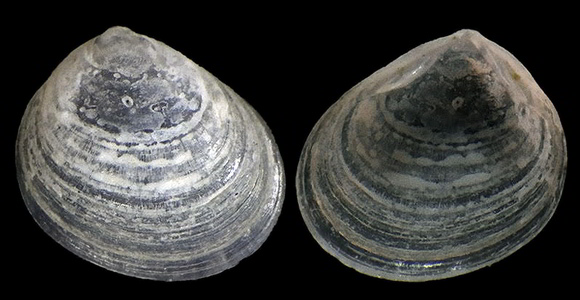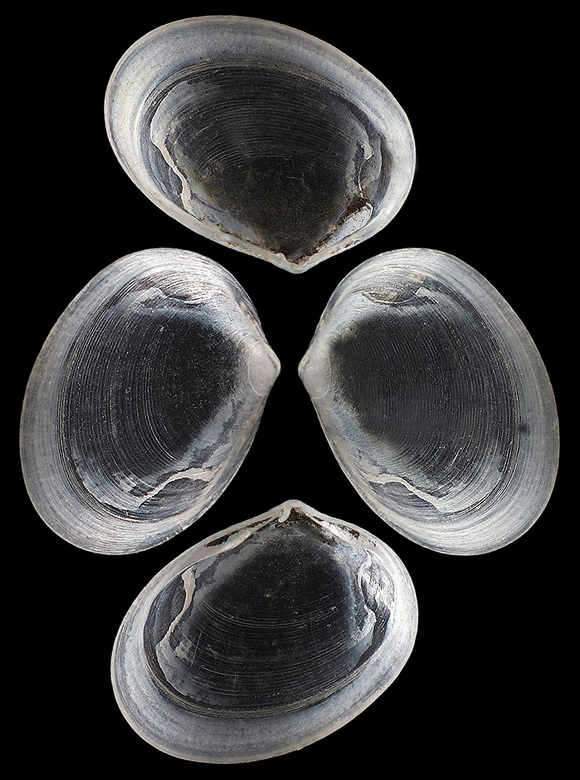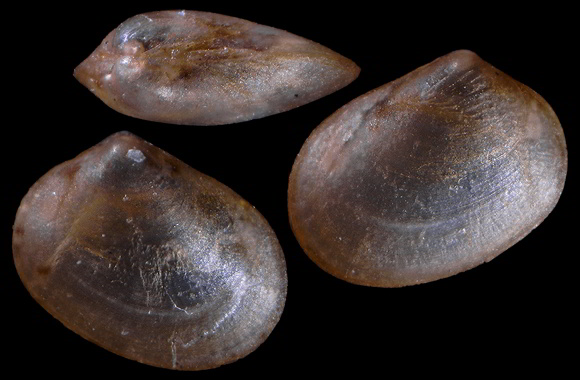
Commensal with sipunculans (peanut worms) on sedimentary bottoms of the infralittoral. Original taxon: Lepton clarkiae.
« Its distinguishing characters are the almost perfect obliquely oval shape, being without a trace of the subangularity which is invariably seen at both extremities of the congeneric Leptons ; and, as to the punctures, it is more devoid of them than the glabrous varieties of the L. nitidum, which however, in the forty specimens I possess, all show more or less the punctured aspect on the umbonal area ; but in the L. clarkiae only the apical circumscribed space is in some, but not in all examples, almost invisibly punctured, which condition is rather more pronounced within than on the outside of the apices. » – W. Clark: “On a new British species of Lepton”, Annals & magazine of natural history ser.2, vol.9, London 1852, p.191.
Right valve collected in tide pool at La Franqui beach, Leucate, Occitania, S. France. 1,2mm.
Original pictures provided by S. Clanzig (FR).
– (CC BY-NC-SA) –

« Sculpture of co-marginal lines and growth stops, usually with radial linear inclusions within the shell structure ». Inner margin smooth. « Ligament: internal in a deep pit below and slightly behind beaks. Hinge: RV with single large anterior and posterior laterals and a prominent anterior “cardinal” tooth; LV with laterals as extensions of the margins and an anterior socket. Pallial Musculature: indistinct. Colour: dirty white to dirty cream. »MBSBI. The shell is larger, flatter and less rounded than E. parrussetense Giribet & Peñas, 1999. It has also a less marked concentric sculpture.
80m deep, in the channel of Hvar island, Split-Dalmatia Comitat, S. Croatia. 2,1mm. Original pictures provided by R. Stanić (HR) – (CC BY-NC-SA).
